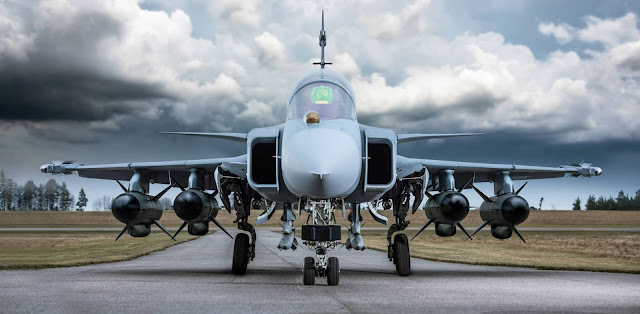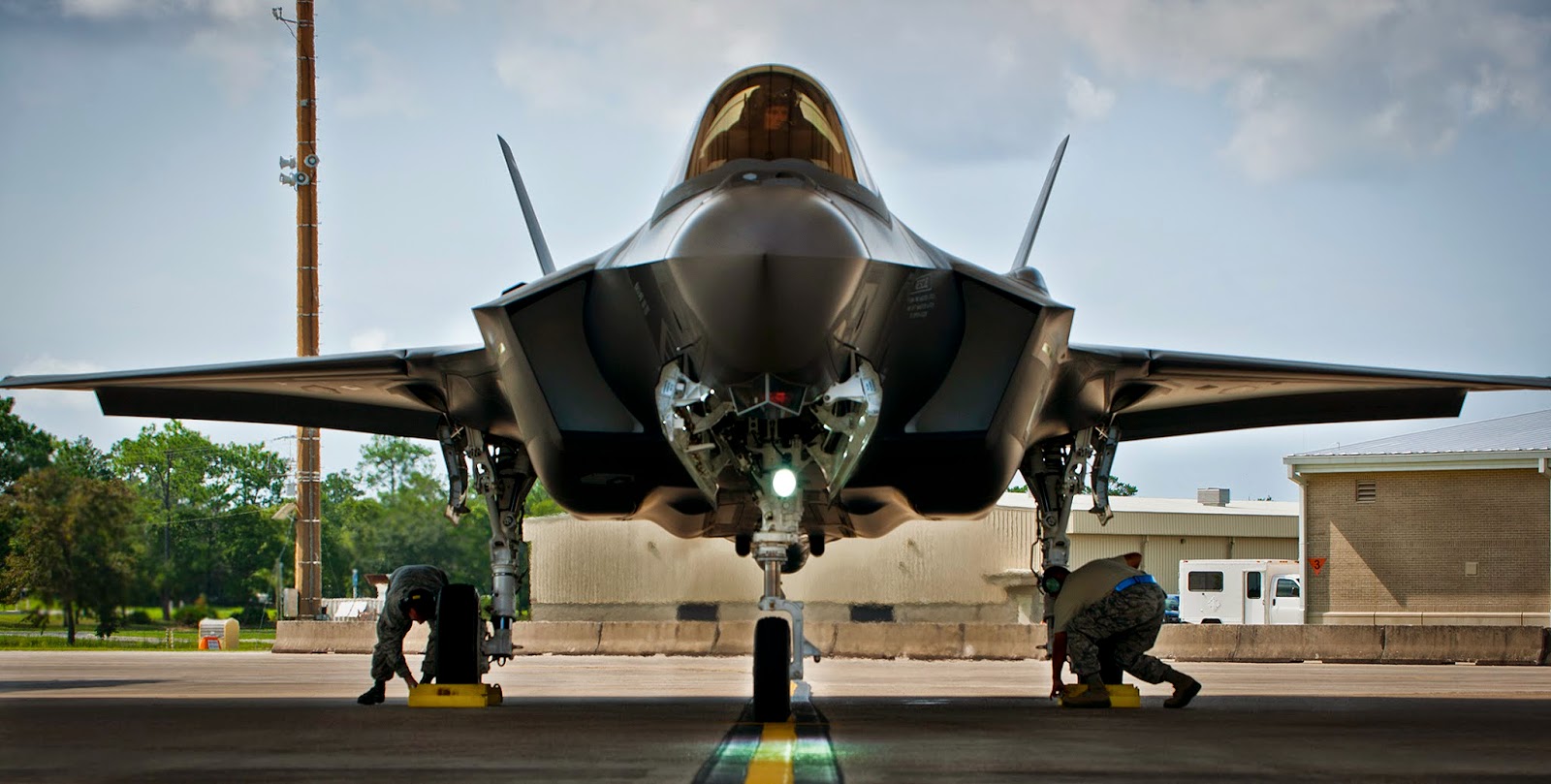Modest proposal: Lets put guns on our Hercs.
 |
| CC-130J "Super Herc" |
In a commentary piece entitled The A-10 Needs To Go, Lt. Col Paul Darling makes the case that the A-10s best days are indeed behind it. Retiring the A-10 would save the USAF about $3.7 billion over 5 years. However, unlike USAF's plans of diverting those funds towards F-35 production, Darling recommends spending that money on something more pragmatic for the CAS (Close Air Support) role.
Take the money saved from the merciful killing of the A-10 and procure Harvest Hawk-type kits for as many C-130s as possible. Then train these Harvest Hawk-130s to provide CAS using Army doctrine and employing modern technology. Or, better yet, use the money to allow the Army to find a replacement for the Kiowa, which was generally preferred by ground forces over the more expensive Apache.
 |
| CH-146 Griffon, basically a civilian Bell 412EP painted green. |
Canada should take a lesson here, as our CAS ability is severely lacking. The CH-146 Griffon helicopter has been criticized as little more than "a civilian designed and built aircraft, with only a coat of green paint". It was proven to be underpowered for its mission over Afghanistan. With little more than a 7.62mm machine gun for armament, the CH-146 Griffon is completely inadequate for the CAS role. (I may tackle the Griffon at a later date.)
Currently, Canada's only real CAS platform is the CF-18 Hornet. The Hornet is actually a pretty decent CAS platform, as multi-role fighters go. It has excellent low level performance, and can be equipped with various rocket pods and other weapons suited for "soft targets". The CF-18 has two strikes against it, however: It needs to operated from an secured airbase and it lacks the endurance to stay on station for very long.
If only the RCAF had an aircraft that capable of taking off from rough fields and staying in the air for hours on end...
Oh yeah! It does.
 |
| We've had 'em for a while, actually. |
First entering Canadian service in 1960, it is hard to imagine the RCAF without the familiar CC-130 Hercules. Not only that, but the familiar "Herc" has been the predominant tactical transport aircraft of the western world for well over 50 years. The C-130 is one of those aircraft that "got it right the first time". Attempts to replace the Herc with a STOL capable turbofan design went nowhere. Instead, Lockheed Martin simply continued to "tweak" the familiar Herc with more efficient engines and lengthened fuselages like that seen on Canada newest CC-130J "Super Hercules".
Canadian Hercs have not only served faithfully as a transport over the years, but it has been adapted to perform Search and Rescue (SAR) duties as well. It has proven useful enough in this regard that an updated version (CC-130J as opposed to the current CC-130H) is considered a possible replacement to the CC-115 Buffalo.
It is quite clear. Canada has a lot of Hercs. We may even be getting some more. We have been using them for over 50 years and will likely use them for another 30 years at least.
So why not add to its already impressive versatility?
 |
| AC-130 Spectre gunship. |
While the AC-130 is impressive, it sacrifices its cargo carrying ability to carry all those guns. The RCAF would have little use for such an extremely specialized aircraft.
There is a way to provide a similar capability to regular Hercs, however.
 |
| KC-130J equipped with Harvest HAWK. |
Known as the Harvest HAWK (Hercules Airborne Weapon Kit) this system is used by the USMC on the KC-130J transport (the KC-130 variant can act as a aerial tanker). It adds a targeting scope (TSS), hard points for 4 AGM-114 Hellfire missiles on the port wing, an AGM-176 Griffin missile launcher (SOPGM) to the loading ramp, and soon a 30mm chain gun pointing out the paratrooper door.
While it lacks the punch of the AC-130, the Harvest HAWK system has the advantage of being palletized. It can be rolled on or off the Herc as needed. Best of all, the Herc can still fulfill its role as a transport or tanker with the Harvest HAWK equipment installed. Its reliance on missiles instead of large-bore cannons is actually more in tune with the latest AC-130W "Stinger II' variant.
There is no guarantee that Canada will be getting anymore Hercs, however. We now have plenty of the newer "J" models. Our older "H" models will likely be replaced with whatever platform is chosen as the new FWSAR (fixed wing search and rescue). This could very well be a non lengthened version of the C-130J, but it does have competition.
_AA_HR.jpg) |
| MC-27J "Praetorian" |
Depending on how the math goes, it still might be more desirable for the RCAF to acquire either the C-27J or C-295 for FWSAR duties. If this is the case, we still have the ability to outfit a few as "pocket gunships". Both models have a gunship model planned, with the same 30mm cannon found in the Harvest HAWK kit. Both are envisioned to have "roll-on/roll-off" pallets, allowing quick conversion. These aircraft have less range than the Herc, however, and far less cargo space. Adding a gunship pallet would pretty much fill the cargo bay.
Even the V-22 Osprey, an unlikely (but intriguing) contender for the FWSAR contract has a gunship variant being considered, but it would be a far more complicated conversion.
In the end, a simple C-130J may prove to be the most cost effective and versatile platform. The ability to use it as a tactical transport, a tanker, a gunship, and a FWSAR platform give it unrivaled flexibility. Some of the equipment used for gunship duties would actually make it better FWSAR platform (FLIR, etc).
Imagine a single aircraft delivering troops to a combat zone, providing air support, then flying those troops home. In times of peace, that same aircraft is used to save lives.
Who says you can't have it all?



Yep the Griffon is a flying mini-van painted green however they can be fitted with the .50 Gau and a Dylan gun on the other side, usally flying in group of two they can provide a bit more than ok CAS.... Still the lack of power is a big issue...
ReplyDeleteWell, "puff the magic dragon" is a great tool for mass clean up and would be a good tool for the RCAF to have. But for close in air support you need a combination of attack helicopters and fixed wing aircraft like the A-10 or A-1 skyraider. And yes the Griffen was and is a bargain basement offering. I still can't figure out why the US is getting rid of the A-10's, the Russians still have a huge amount of tanks and the A-10 is the only aircraft that levels the playing field, It might be a different story in the Ukraine if there air force had A-10's.
ReplyDelete